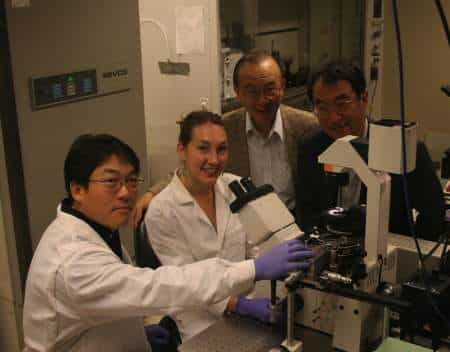It has been found that the use of implants made of titanium nanotubes together with stem cells can accelerate the growth of bone tissue. The group of bioengineers from the University of California – San Diego used nano-biotechnology technologies that made it possible to carry out this experiment. In fact, they were able to place mesenchymal cells inside these very thin titanium oxide nanotubes to then induce and control cell differentiation. This process leads to the formation of specialized cells called osteoblasts, which are responsible for forming bone tissue. Mesenchymal cells, endowed with a certain degree of stemness, i.e. of giving rise to other cell lines, can be extracted from the bone marrow of the same patient. The most interesting discovery of this work is undoubtedly the fact that by precisely controlling the diameter of these nanotubes it is possible to modulate the differentiation. Using larger diameters, it has been observed that the growth of osteoblasts occurs more rapidly and the resulting tissue is more resistant. The implantation of these nanotubes with mesenchymal cells may perhaps, in the future, be applied to the clinic to guarantee patients a faster post-operative course. The work, with lead author Brian Seunghan, was published in the Proceedings of the National Academy of Sciences (PNAS). [via Ucsd ]
You may also like
MOC, Computerized Bone Mineralometry for osteoporosis
X-ray computerized bone mineralometry (abbreviated as MOC ) represents the current method of reference in the diagnosis of osteoporosis , successfully used at the polyclinic of Milan and in other Italian hospitals. MOC is based on the principle of photonic absorptiometry: a thin beam of X-rays passing through the tissues is absorbed in proportion to… Continua a leggere MOC, Computerized Bone Mineralometry for osteoporosis
Cemented total hip prosthesis
Over the years, but not only, the joints lose elasticity and arthrosis phenomena can occur which cause pain, up to a poor mobility of the patient. In these cases, a hip prosthesis similar to the one visible in the radiograph to the side is used. The procedure itself is quite simple and takes about an… Continua a leggere Cemented total hip prosthesis
Liver stem cells
What better argument than that of stem cells to start the new year: totipotent cells have been used to treat serious liver disease. In Brazil, 15 people were chosen from those on the waiting list for liver transplantation and were – on a voluntary basis – subjected to cell therapy. "We are still in a… Continua a leggere Liver stem cells
HIV: new therapeutic strategies
To eliminate HIV from the body, at a minimum, infected, quiescent T cells would need to be forced to produce viral proteins. This would cause the destruction of these cells, which would be attacked by drugs that block the spread of the virus from one cell to another. New data suggest that an intensification of… Continua a leggere HIV: new therapeutic strategies
Stem cell transplant to treat diabetes
Medical science is increasingly aiming at the prevention and repair of the defect at the origin of the disease, according to a new philosophy aimed at intervening further upstream of the pathogenic process than on the final effects with devices or treatments aimed at mitigating rather than definitively curing a disease, such as diabetes. Confirmations… Continua a leggere Stem cell transplant to treat diabetes
